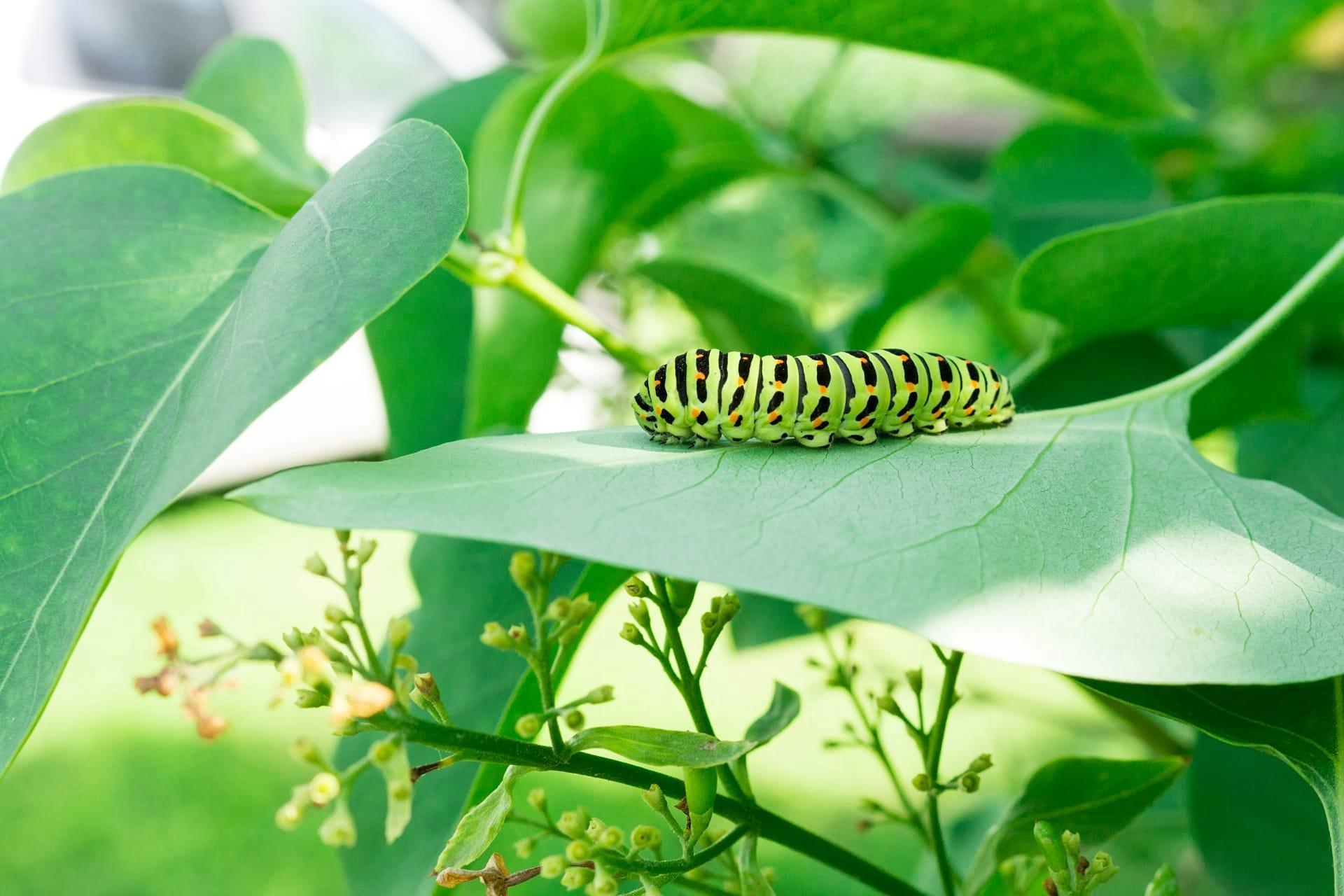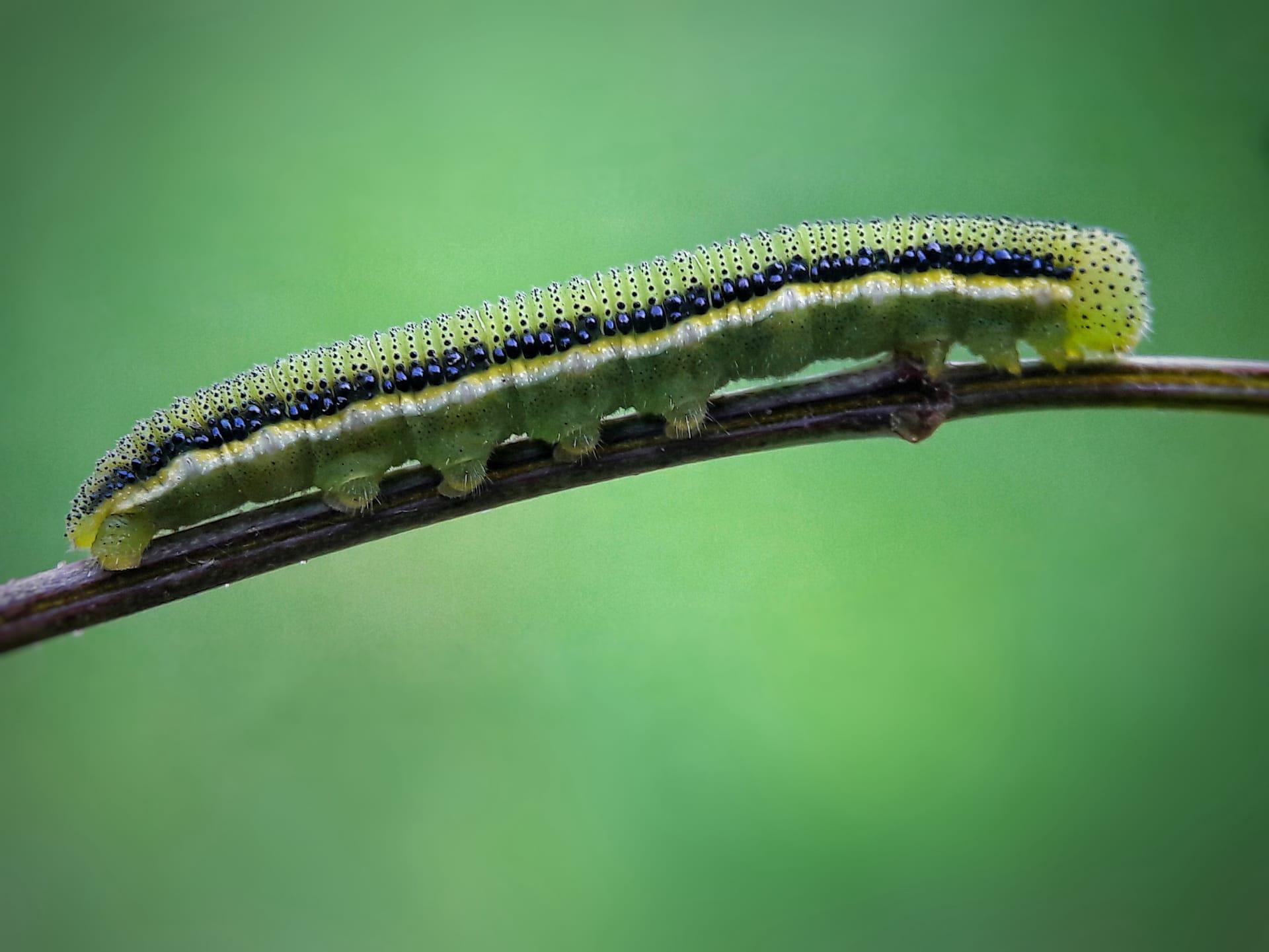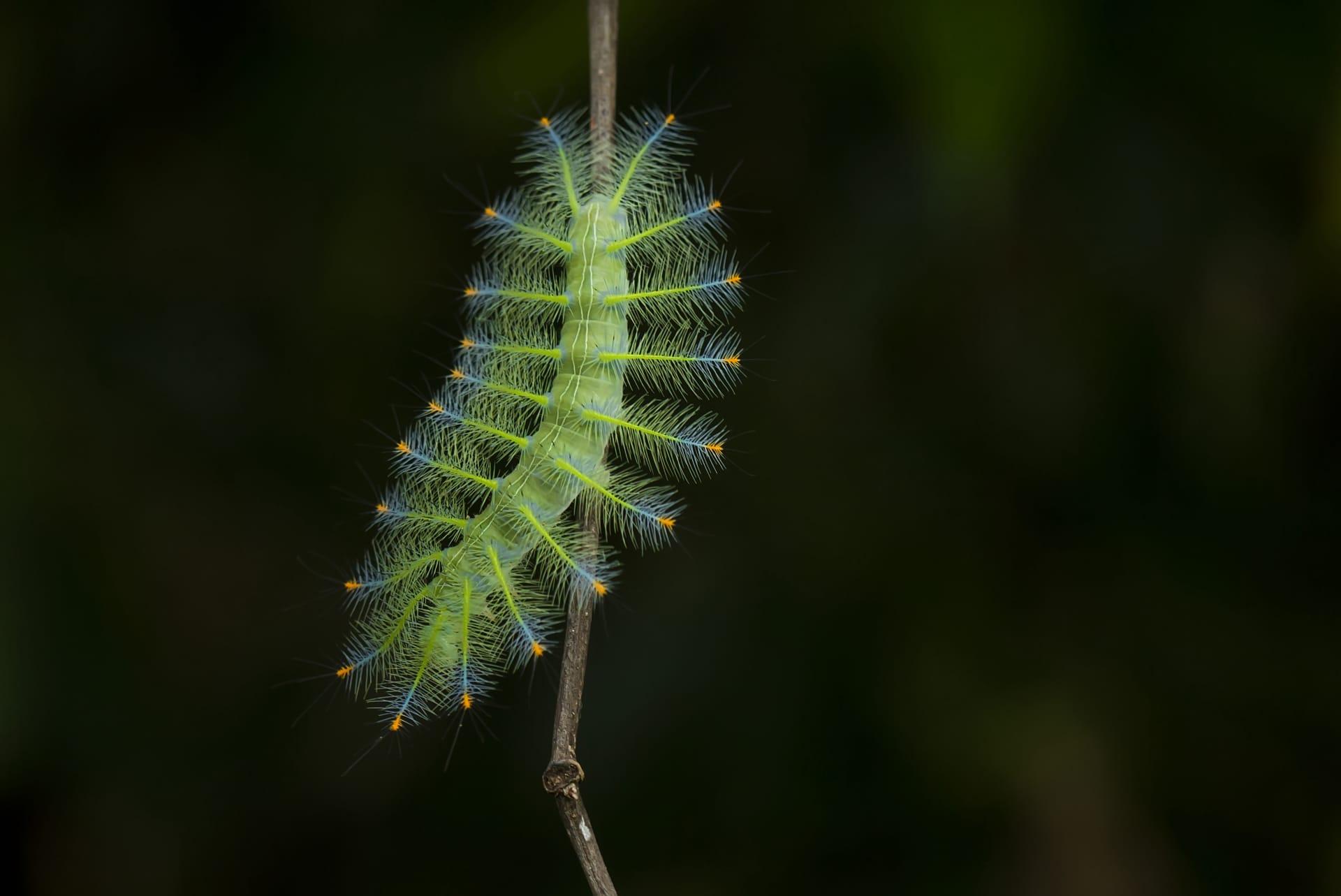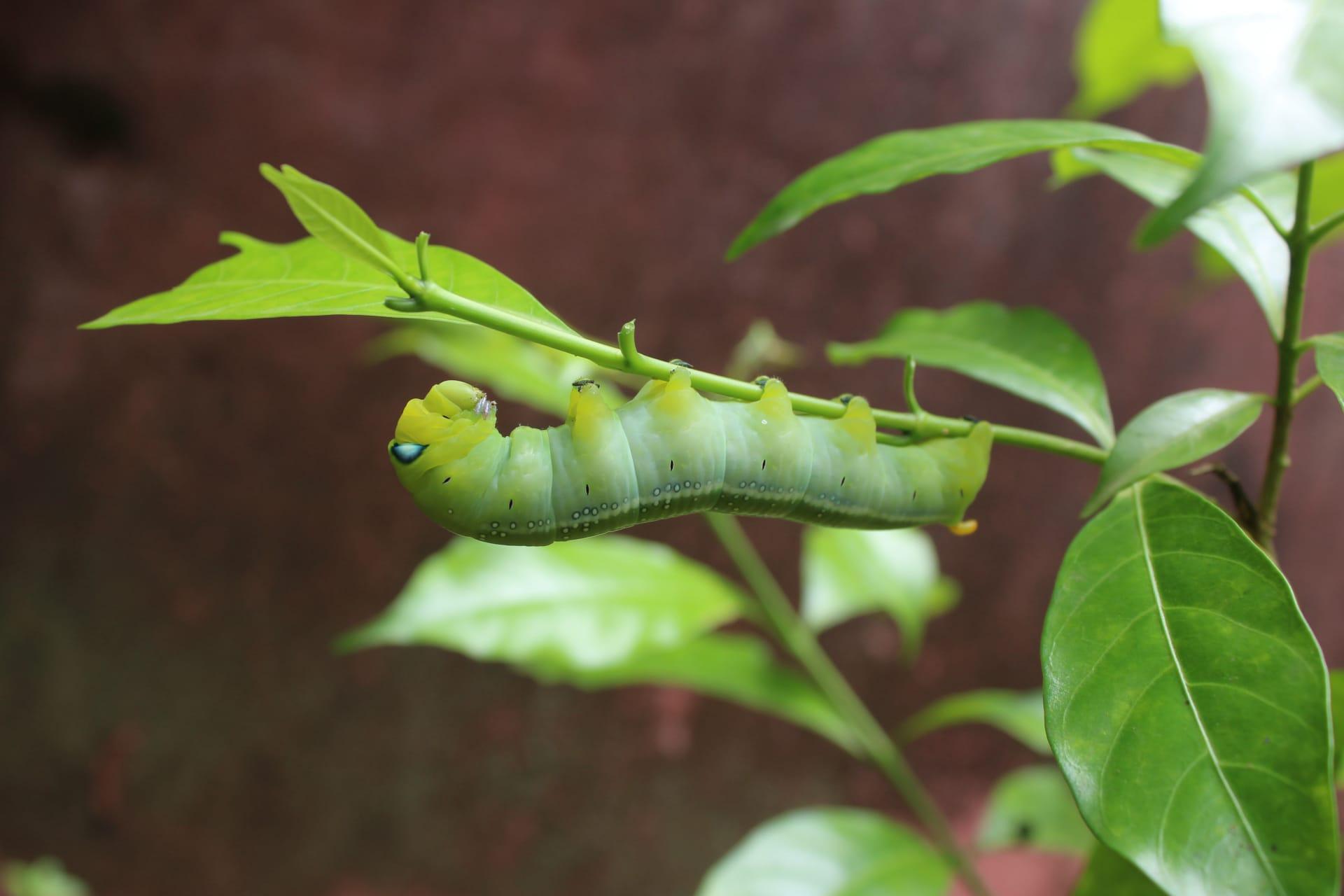1
Green caterpillars, the larvae of butterflies and moths, are known for their vivid color, which is not just for show. This brilliant green hue is a form of camouflage, blending seamlessly with leaves and foliage. The coloration is so effective that predators often overlook them, despite their presence on the leaf's surface. This green pigment is derived from the caterpillar's diet, primarily consisting of leaves rich in chlorophyll, which also helps them in photosynthesis, a rare ability in the animal kingdom.
Another fascinating aspect of green caterpillars is their growth rate. Before reaching pupation, a caterpillar can increase its body mass by over 10,000 times. For example, the Tobacco Hornworm, a type of green caterpillar, starts at about 0.03 inches (0.76 mm) in length and can grow up to 4 inches (10 cm) in just a matter of weeks. This rapid growth requires them to shed their skin multiple times, a process known as molting, which occurs about five times throughout their larval stage.

2
Did you know some green caterpillars have unique defense mechanisms? Take the Spicebush Swallowtail caterpillar, for instance. When threatened, it can transform its appearance to resemble a snake's head, complete with fake eyes. This startling transformation is an effective deterrent against many predators. The caterpillar achieves this by retracting its head into its body, puffing up its thorax, and displaying its eye-like markings prominently.
Additionally, green caterpillars are crucial for pollination. While they don't pollinate flowers themselves, their eventual transformation into butterflies and moths plays a significant role in the ecosystem. Caterpillars contribute to this cycle by feeding on specific host plants, facilitating the growth of a diverse range of plant species. This relationship highlights the importance of caterpillars in maintaining healthy and diverse ecosystems.

3
Green caterpillars can exhibit astonishing eating habits. A single caterpillar can consume an entire leaf in less than 24 hours. For example, the Monarch caterpillar, while not always green, can eat about 200 times its weight in milkweed leaves before pupating. This insatiable appetite is crucial for their rapid growth and development during the larval stage.
Interestingly, some species of green caterpillars can produce sounds. The Walnut Sphinx caterpillar, for instance, makes a whistling sound when disturbed. This is a rare ability in the insect world, achieved by forcing air out of their abdominal segments. These sounds serve as a defense mechanism, startling potential predators and warning them of the caterpillar’s presence.

4
Green caterpillars have a unique role in cultural and scientific symbolism. For instance, the caterpillar's transformation into a butterfly or moth has long been a symbol of change, growth, and rebirth in various cultures. In science, caterpillars are often used in studies about metamorphosis, helping researchers understand the complex processes of biological transformation and development.
Another interesting fact is the green caterpillar's impact on agriculture. While many view them as pests due to their leaf-eating habits, they also play a role in controlling the growth of vegetation. This natural pruning can promote healthier and more robust plant growth. However, in large numbers, they can cause significant damage to crops and forests, leading to various control measures being implemented in agricultural and forest management practices.

5
Caterpillars, including the green varieties, are a vital part of the food web. They serve as an essential food source for a variety of animals, such as birds, spiders, and even other insects. The presence of caterpillars in an ecosystem often indicates a healthy bird population, as they are a primary food source for many bird species, especially during the breeding season when they need high-protein food for their chicks.
Green caterpillars can influence local climate control. Through their feeding activity, they help regulate the amount of sunlight that penetrates the forest canopy. This regulation can affect the microclimate within forests, impacting temperature, humidity, and even the growth patterns of other plant species. Their role in shaping the environment, albeit subtle, is a fine example of the interconnectedness of ecosystems.